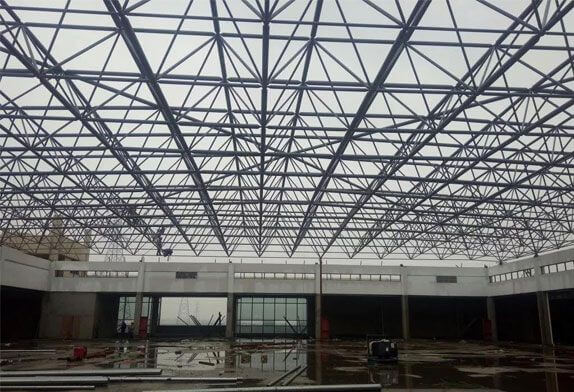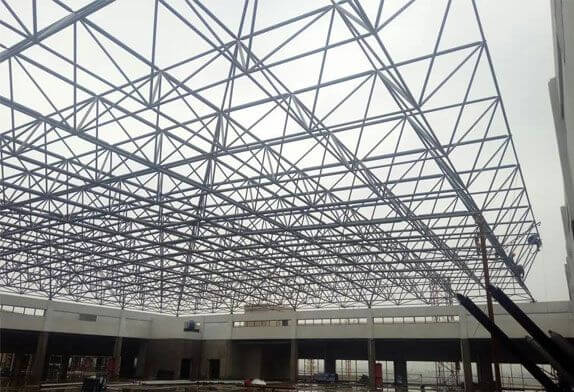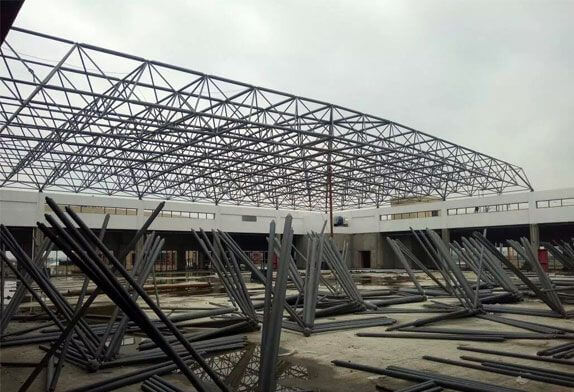+86 177 5193 6871
222, Block B, Diamond International, Guozhuang Road, Xuzhou, Jiangsu, China
Due to the faster and faster construction of modern cities, the number of buildings in the city continues to increase. In order to make the steel structure design of construction engineering better used, designers combine the latest science and technology to improve the design method of steel structure for construction engineering, making the steel structure more rational and systematic. Steel structures, it is very different from other building materials, which can effectively save resources and allow buildings to achieve the effect of energy saving and emission reduction. In actual construction projects, there are still many problems in the design of steel structures. If the relevant personnel does not solve these problems reasonably, it will have a serious impact on the stability of the steel structure. Therefore, the stability of the steel structure should be strictly controlled. Take control and pay more attention to the safety of personnel.

For the steel structure, order to have high stability, it is necessary to pay more attention to the design of the steel structure, so as to avoid the influence of the steel structure the design. When designing steel structures, designers should pay more attention to all aspects of the design and give full consideration to them, especially the compression part of the steel structure, the stability of the steel structure should be fully considered during the design process. In some construction projects, the steel structure is easily affected by structural deformation, which puts the steel structure under severe pressure and easily leads to the loss of stability of the steel structure.
In construction projects, the steel structure is the most important component, usually composed of multiple components. If there is a problem with one component of the steel structure, it will have a serious joint reaction, which will have a very serious impact on other components, and even have a very serious impact on the overall stability of the steel structure.
For steel structures, both stability and bearing capacity will be affected by their own stiffness, and the stiffness of steel structures will also have very serious restrictions on the overall composition of steel structures. Therefore, stability becomes the most important core of the overall steel structure. Only by ensuring the stability of each part of the steel structure can the entire building structure be prevented from being affected. If in actual use, there is a certain degree of deformation inside the steel structure, it will have a very serious impact on the distribution of internal forces, and even a certain degree of local weakening, which will have a serious impact on the overall bearing capacity of the building.

When relevant personnel carries out construction projects, only by ensuring that the design of the steel structure can have strong stability can the overall building have high safety? The relevant personnel must pay more attention to all components in the steel structure design.
During the construction process, relevant personnel must fully analyze the characteristics of the construction project, mainly because the quality of the construction project will be affected by the quality of the steel structure, and even affect the safety of the building. Therefore, the stability of the steel structure is directly related to its quality of the steel structure. When designing the steel structure, the relevant personnel strictly control the stability of the steel structure to avoid instability of the steel structure. When designers design steel structures, due to the complexity in the early stage, designers can use some advanced technical equipment and professional data analysis to strictly check the indicators of steel structures. Only by carrying out the most detailed quality inspection on the steel structure can the steel structure be effectively used. When inspecting the parameters of the steel structure, it is necessary to carry out inspections on many aspects, such as the seismic strength system of the steel structure, the damping ratio of the structure, and the horizontal load. Among them, the horizontal load is in the construction environment of the construction project, and the vertical load should be guaranteed to be zero so that the horizontal load can be zero. However, in the actual construction, the load level will be different, especially the wind load, which will have a serious impact on the stability of the building level.
With the continuous development of the times, building design has become more and more complex. In architectural engineering, many architectural designs are based on asymmetry, so when the architectural design is carried out, inclined columns are generally used for architectural construction. Compared with other vertical parts, this part has sharper edges and corners and a more severe slope. Therefore, designers should have higher shear requirements for building components. In the actual steel structure design of construction projects, many designers change the vertical components into columns for convenience and use inclined columns as oblique rods. Although this design is unreasonable to a certain extent, it will not affect the structure of the building’s stability. If shear adjustments are made to the frame columns, this can have very serious effects. In addition, the building has supporting columns both vertically and horizontally, so that the oblique columns can be regarded as supporting columns in the horizontal direction, so the vertical direction lacks support strength, causing serious errors in the calculation of shear force, resulting in worse stability of the steel structure.
When designing steel structures, designers should pay attention to the integrity between columns and beams. Only a more reasonable design of the steel structure can allow steel structure to have greater bearing capacity. Once a large horizontal load or strong earthquake occurs, the beam can bear most of the pressure, allowing the column to bear less pressure, to avoid the collapse of the building when it is under pressure and has strong earthquakes. It is precisely because the design of the beam must have greater compression resistance so that it can be restored to its original state, thereby reducing the pressure to the greatest extent and allowing the steel structure to have strong stability.

For the static method, in fact, it is to combine all the stress conditions of the micro-deformed structure and establishes the differential equation balance according to the relevant conditions. Relevant personnel can calculate the critical load according to these equations. However, in the actual use process, in order to construct the relevant balanced differential equation, certain specifications must be followed in the setting, such as the member should be a straight bar of the section, and the pressure should be kept on the previous axis to act.
For the dynamic method, in fact, once a small disturbance is applied to the structural system in a balanced state, it will inevitably cause corresponding vibrations. Under such conditions, vibration acceleration and structural deformation will have a serious impact on structural loads. influences. If the load is lower than the stability limit load value, the acceleration and deformation must be in the opposite direction. Therefore, after removing the interference, the movement can be kept at rest, and the structure can have a strong balance. The critical state load is usually the buckling load of the steel structure, which is obtained when the vibration frequency of the steel structure is zero.
When calculating the stability of building steel structures, the instability and overall stiffness can be calculated. In the calculation specifications, the most commonly used method is to calculate the stability of the axial compression bar. It is mainly through the reduction factor method and the critical pressure solution method, in which the critical pressure is obtained through Euler’s formula.
In construction engineering, the stability of steel structures will be affected by the members. Therefore, there should be a strong connection between stability and leverage, and designers can start with the steel structure as a whole when analyzing stability. For the steel structure, it is a whole composed of various levers. Once one of the levers is deformed and unstable, it will inevitably have a joint impact on other rigidly connected rods.
Relevant personnel needs to pay more attention to some characteristics in the process of using elastic stability calculation. There are mainly two aspects. The first is the second-order analysis, which is very important for flexible components. Once the flexible components are deformed, it will inevitably cause very serious changes in the interior of the steel structure, and even have a great impact. On the other hand, ordinary calculation principles cannot be used to calculate the stability of steel structures.
Because steel structures have the advantages of short construction periods, good seismic performance, and high bearing capacity, especially those buildings with higher floors in cities. When carrying out the seismic design of steel structures for these high-rise buildings, it is necessary to ensure that the joints are well connected. Usually, the joints have three requirements: ductility, energy dissipation capacity, and strength.The designer should ensure that the connection strength is higher than the yield bearing capacity of the ends of the connected components, so that it has a large deformation capacity, so as to effectively compensate for the strength and other aspects. Steel itself has strong ductility, but it cannot be reflected in ductile structures. Therefore, when designing, it is necessary to make reasonable use of the detailed structure to avoid concentrated and large restraint stress.
Due to the continuous improvement of the economic level of modern society and the corresponding improvement of the construction industry, people have put forward higher requirements for the structural safety of construction projects. For construction projects, the stable design of steel structures plays a very important role in construction projects and has a direct impact on the life safety of the people and the economic benefits of the project. Relevant personnel should pay more attention to the design of steel structures, conduct reasonable analysis on the problems in steel structure design, and formulate effective solutions to make steel structures have higher stability and ensure the corresponding development of construction projects.
